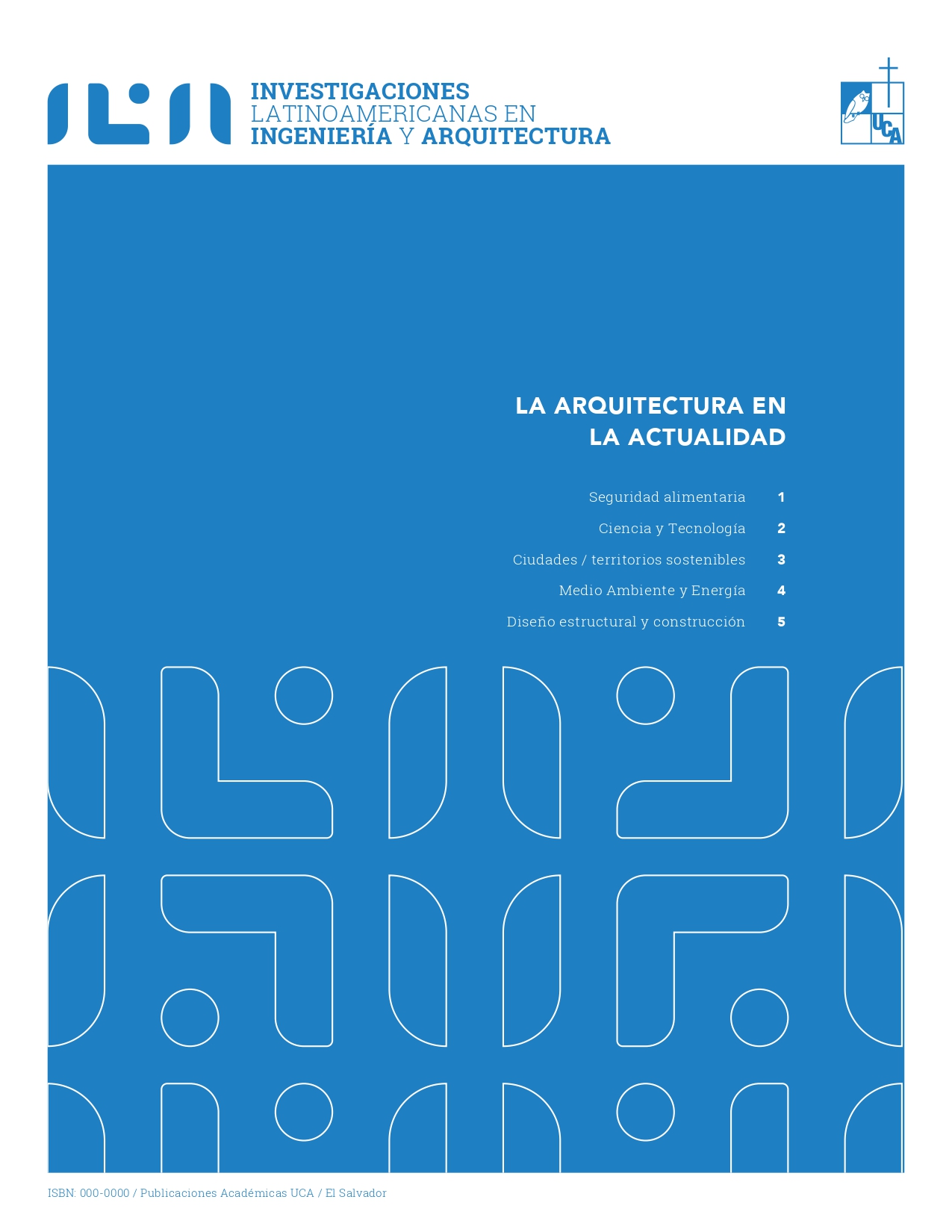Abstract
Brazil generates 180,000 t/d of solid waste, of which 51 % is organic matter, therefore, the treatment of solid waste is an important management point based on the National Solid Waste Policy of the year 2010. The present work consists of evaluating the rate of methane generation using organic residues collected from CEAGESP, through an anaerobic ascending flow reactor with leachate recirculated. The reaction time was of 14 d. and the mass of waste introduced into the reactor was of 750 g. The volume of leachate used was 7.0 L. The temperature was controlled by means of a heating chamber at 30 ± 2 ºC. The biogas rate obtained on average was of 0.52 m3 biogas/kg SV and a methane percentage of 77 %, obtaining a methane rate of 0.36 m3 CH4/kg SV. The elimination of SV was of 82 % on average.
ILIA: Investigaciones Latinoamericanas en Ingeniería y Arquitectura, No. 01, 2024: 181-184.
References
Goulette, S. (2000). What a waste. Proceedings of the Institution of Civil Engineers: Municipal Engineer, 139(3), 167–169. https://doi.org/10.1680/muen.2000.139.3.167.
Kaza, Silpa, Lisa Yao, Perinaz Bhada-Tata, and Frank Woerden, V. (2018). What a Waste 2.0: A Global Snapshot of Solid Waste Management to 2050. In The world bank (Issue December). https://doi.org/10.1596/978-1-4648-329-0.
Presidencia de la República de Brasil. (2012). Ministério do Meio Ambiente, Lei 12.505/10 de 02 de Agosto Política Nacional de Direcionamento Resíduos Sólidos (PNDRS) 2a Edição.
Presidencia de la República de Brasil. (2022). DECRETO No 10.936, DE 12 DE JANEIRO DE 2022. https://www.planalto.gov.br/ccivil_03/_Ato2019-2022/2022/Decreto/D10936.htm#art91. Presidencia de la República de Brasil. (2022). DECRETO No 10.936, DE 12 DE JANEIRO DE 2022. https://www.planalto.gov.br/ccivil_03/_Ato2019-2022/2022/Decreto/D10936.htm#art91.
Instituto Brasileño de Geografia y Estadística. Informaciones estadísticas São Paulo. http://cod.ibge.gov.br/493.
Ayuntamiento de Sao Paulo. (2014). Plano De Gestión Integrado De los Residuos Sólidos de la Ciudad de Sao Paulo.
https://www.prefeitura.sp.gov.br/cidade/secretarias/upload/servicos/arquivos/PGIRS-2014.pdf.
ABRELPE (Associação Brasileira de Empresas de Limpeza Pública).(2022). Panorama dos Resíduos Sólidos no Brasil 2022. https://abrelpe.org.br/panorama/.
Ministerio de las Ciudades. (2016) Diagnostico do Manejo de Residuos Sólidos Urbanos -2014. Brasília, 2016.
http://www.snis.gov.br/diagnostico-residuos-solidos/diagnostico-rs-2014.
CEAGESP. (2022). Relatório de Gestão 2022. https://ceagesp1-my.sharepoint.com/personal/servicos_portal_ceagesp_gov_br/_layouts/15/onedrive.aspx?a=1&id=%2Fpersonal%2Fservicos_portal_ceagesp_gov_br%2FDocuments%2FTransparênciaAtiva%2FAuditorias%2FRelatóriodeGestão%2Felatorio_Gestão_2022.pdf&parent=%2Fpersonal%2Fservicos_portal_ceagesp_gov_br%2FDocuments%2FTransparênciaAtiva%2FAuditorias%2FRelatóriodeGestão.
Wang, Z., Hu, Y., Wang, S., Wu, G., & Zhan, X. (2023). A criticalreview on dry anaerobic digestion of organic waste: Characteristics,operational conditions, and improvement strategies. Renewable and Sustainable Energy Reviews, 176(August 2022), 113208. https://doi.org/10.1016/j.rser.2023.113208.
Nasir, I. M., Ghazi, T. I. M., & Omar, R. (2012). Production of biogas from solid organic wastes through anaerobic digestion: A review.Applied Microbiology and Biotechnology, 95(2), 321–329. https://doi.org/10.1007/s00253-012-4152-7
Gunaseelan, V. (1997). Anaerobic digestion of biomass for methane production: A review. Biomass and Bioenergy, 13(1–2), 83–114.

This work is licensed under a Creative Commons Attribution-NonCommercial 4.0 International License.
Copyright (c) 2024 M. J. Lucero, R. C. Contrera (Autor/a)





